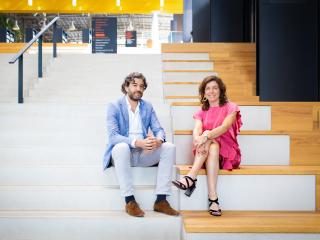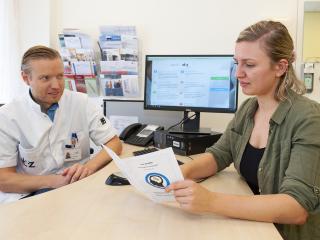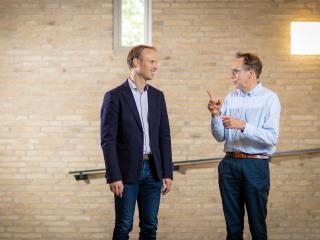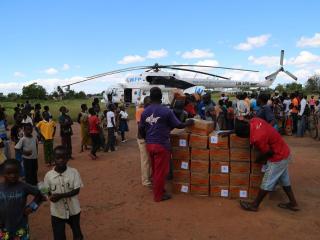Impact in the oncologist's consulting room
Patients who are diagnosed with cancer often have to make a choice of treatment together with their doctors at short notice. But how does a patient do this properly, taking into account all the factors of prognosis, risks, and side effects? And what do percentages mean for an individual patient? Together with the Integraal Kankercentrum Nederland (IKNL), Tilburg University is developing a tool to provide patients with personalized information.
'What does this probability calculus mean for me?'
“There are websites, brochures, and flyers with general information about the large group of average patients. But as a patient, you want to know what a treatment means to you,” says researcher Emiel Krahmer of the Tilburg School of Humanities and Digital Sciences (TSHD). “Moreover, there is no such thing as 'the patient,' every human being is different, in terms of lifestyle, age, illness, and how and how much information the patient wants to receive. There are so many variables that it is necessary to incorporate them into a tool.”
More than survival chances
“In choosing a treatment, many factors are taken into account,” explains Xander Verbeek, Chief Innovation Officer of IKNL. “The choice for prostate removal for prostate cancer, for example, is different for a fit 50-year-old man with prostate cancer compared to an 82-year-old man in a nursing home. Treatment choices have always been based primarily on prognosis of survival. Nowadays, we look more and more at quality of life. Because an increasing number of people get and survive cancer but continue to have complaints afterwards. IKNL manages the Netherlands Cancer Registry, a treasure trove of data on diagnosis and treatment. The PROFILE database of quality of life reported by patients is also used, a real gold mine. Data we can use to sketch patient profiles. The result is a data-driven tool that focuses on the patient's profile. What choices did people like you make in this position?”
‘IKNL manages a wealth of data on cancer patients’
- Xander Verbeek
Validated data
“In the medical world a lot of research is done on prediction models. But subsequently you have to do something with it. That is the power of this research. We work with reliable data, also in collaborations with Kanker.nl. This information has been validated and written in an accessible way. It is important to describe jargon and difficult terms in the same way in the tool, to avoid confusion,” according to Verbeek. Krahmer: “It is quite difficult to explain the difference between a general probability calculus for all patients and the probability for you personally. A lot of research has been done into the best way of “framing” information: how to explain something as well as possible.”
'There is no such thing as ‘the patient,’ every person is different'
- Emiel Krahmer
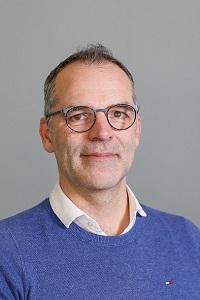
Different disciplines
“Different disciplines come together in this project: data science, language technology, and communication research,” says Krahmer. “That makes it particularly enjoyable to work on. I learn a lot about the medical world. By the way, our three PhD candidates do as well. They sit at the IKNL one day a week and were also allowed to shadow a doctor in the hospital for one day, including during bad news conversations: a very instructive experience.” Verbeek is also enthusiastic about the collaboration. Verbeek: “It's nice to see what the meaning of the story behind the figures is. And the doctors are also keen to work with the tool. That's how we create impact in the consulting room.”
Intuitive approach
“It's surprising for me that not every patient wants the same amount of information,” Krahmer continues. “One wants to know everything, the other wants to know as little as possible. You have to include this in your tool as well. Another revelation for me was that doctors often make intuitive choices in how they inform people. At the same time, we know from research that, sadly, little of the information from a conversation between doctor and patient is remembered. Then it is valuable for people to be able to consult tailor-made information at home.”
More information, more applications
After a year and a half, the contours are now in place. In a few years, there should be tools for intestinal and breast cancer. Krahmer: “I can imagine that you can develop something similar for all types of cancer based on the same methodology, adapted for that specific condition.” In the coming years, the wealth of information on cancer patients and treatments will only grow. Verbeek: “We are now working with the large amount of available information. In a number of years, more parameters will be available for patients, for example, through the use of smart watches.”
Other choices
The tool will be evaluated afterwards. “Important,” emphasizes Verbeek, “because we want to make a tool that really helps the patient. We are now starting to create concepts, and we also test these as we go along. Are patients going to make different choices? Krahmer: “Patients are expected to make less invasive choices if they know what the risks for side effects are in combination with an improvement in the chances of survival. At the same time, I wonder. The uncertainty of a cancer diagnosis is big, and perhaps patients are still inclined to opt for an invasive treatment in order to be on the safe side. But they do so having all the relevant information.”
Contact
More articles Focus on Impact
Date of publication: 13 February 2020



